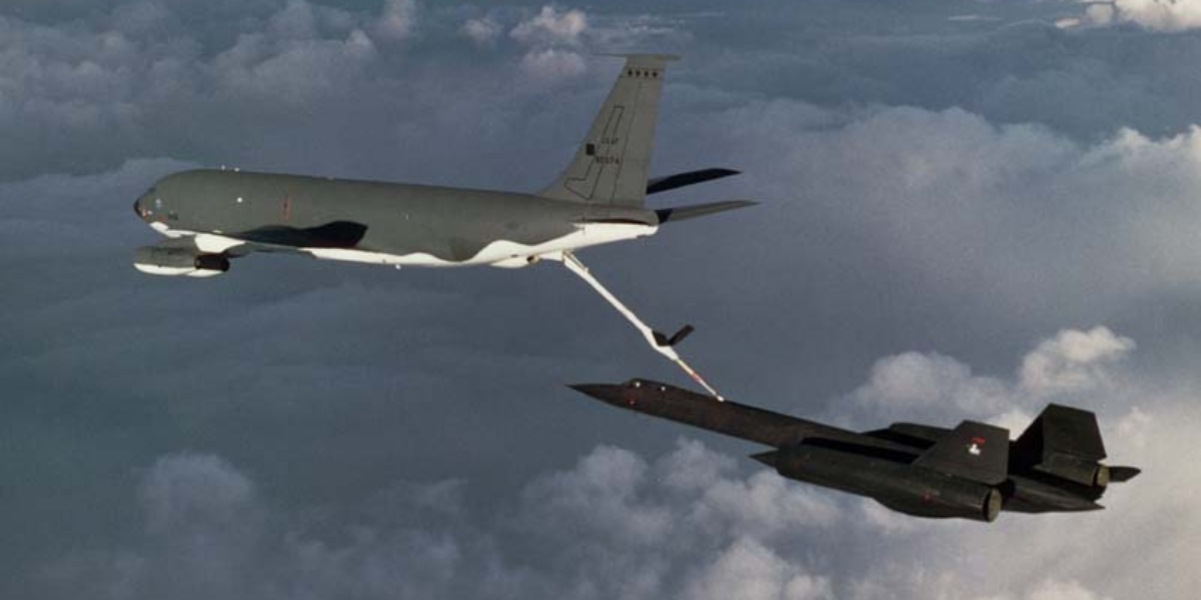The SR-71 Blackbird
A group of Lockheed members led by Clarence “Kelly” Johnson—then vice president of Lockheed’s Advanced Development Company Projects, also referred to as the “Skunk Works” and currently a part of Lockheed Martin—designed the SR-71, the most sophisticated Blackbird—including the A-12 and YF-12.
Beginning in the late 1950s, the A-12 reconnaissance aircraft—which made its first flight in April 1962 and remained classified until 1976—served as the model for the Blackbird. The YF-12A interceptor variant was first made public by President Lyndon Johnson on February 29, 1964, which was more than six months after it made its first flight. On December 22, 1964, the SR-71’s maiden flight was completed.
The Blackbird was built to reach altitudes of up to 85,000 feet and cruise at “Mach 3+,” faster than three times the speed of sound, or more than 2,200 miles per hour.
Checking out in the Blackbird like a cowboy
Col. David P. Dempster, Blackbird Reconnaissance Systems Officer (RSO) who was also part of the first US Air Force (USAF) contingent to fly operational SR-71 reconnaissance sorties from Okinawa into “denied areas” (the term “denied area” was referred to a specific area over or around a foreign country where you could encounter anything and everything… from MiGs to SAMs), recalls in Richard H. Graham’s book SR-71 Blackbird Stories, Tales and Legends:

“Jim Watkins was a great pilot to be crewed within the Blackbird. A Texas cow-boy who raised horses in his off time, Jim loved, breathed, and lived for flying.
“But, like his horses, he ‘felt’ and handled them with cowboy common sense. Imagine checking out in the Blackbird, a World War II B-24 pilot who flew fighters, transports, KC-97 tankers, and KC-135 tankers at Beale. In tanker, Jim was on the initial OXCART team and provided the air refueling support for the A-12s flying from the Ranch. Jim checked out in the SR-71 like a cowboy putting on an old familiar leather glove!
“We were honored to be among the four SR-71 crews selected to deploy for the first time to Okinawa in March 1968. On 21 March, the first operational sortie flew and the crew encountered a double-engine flameout during descent to their tanker as they exited the target area. After refueling, they returned to Okinawa. A week later the second operational sortie flew, and again, with a different crew and different Blackbird, they encountered the same double-engine flameout at the start of their descent. They landed in Thailand due to the left generator not working. What was happening? Both planes checked out good on the ground after landing and we had lots of jaw-boning among ourselves and with Lockheed tech reps, with no conclusions.
KC-135Q saving an SR-71 over Laos
“Then, on 19 April 1968, Jim and I launched on the third operational sortie (the first for us and Crew Chief Technical Sergeant Bud Martin’s #974). We zipped through the target area with no problems and began the start descent checklist. As Jim pulled the throttle back to the rpm setting called for in our procedures, we had a double-engine flameout. Excitement, adrenaline pumping, and we dropped like a rock into Northern Laos! Jim got both engines started around 30,000 feet, and we headed south.
“Our [KC-135Q Stratotanker] tanker, the real hero of this story, saw our rate of closure on him stop. He knew what had happened and headed north immediately, unprotected, into enemy territory and rendezvoused with us. Refueling with him, we headed back into Thailand and proceeded to our preplanned end refueling point.
“What to do now? We were scheduled to go back to the target area for another ‘hot loop.’ Over the intercom, I heard this commonsense cowboy say, ‘Dave, I think if when we start our descent, we hold a higher-than-normal rpm we can avoid the flameouts. Want to give it a try?’ ‘Sure,’ I answered. We accelerated back to Mach 3-plus and on course into the target area. We eyeballed adding about 30 miles to the start descent range and when the time came Jim’s theory worked perfectly. No flameouts and a smooth descent.
‘Ichiban,’ the ‘number one’ Habu
“What was the secret and why did this work? The answer turned out to be the way the engine’s fuel controls were programmed. They used standard adiabatic lapse rates, which engineers all over the world assumed depicted the height of the tropopause and outside air temperatures at varying altitudes. WRONG! What we discovered was that in Southeast Asia, the tropopause (and magnificent thunderstorms we would look down on) could go as high as 65,000 feet, rather than the textbook 55,000 feet. Moreover, the air was much colder. Lockheed and Pratt & Whitney Co. eventually reprogrammed the fuel controls correctly and the problem went away. In the interim however, all of the crews adopted the cowboy’s technique and the flameout problems disappeared.
“The day after this flight Jim, Technical Sergean. Bud Martin, and I proudly stenciled the first Habu on the side of #974, which went on to be so successful that it was dubbed ‘Ichiban,’ the ‘number one’ Habu in the 1968 period on Okinawa.”
Photo by U.S. Air Force

